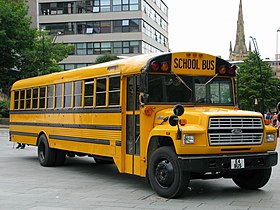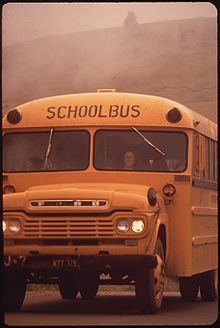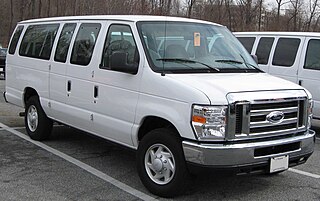
The Ford E-Series is a range of full-size vans manufactured and marketed by the Ford Motor Company. Introduced for 1961 as the replacement of the Ford F-Series panel van, four generations of the model line have been produced. Marketed for both cargo and passenger transport configurations, the E-Series has been designed with multiple design variations for both retail and commercial sale, including vans, and commercial-grade cutaway van chassis and stripped chassis.

The D series is a line of pickup trucks that was sold by Dodge from October 1960 to September 30, 1993. The same basic design was retained until the October 1993 introduction of a completely redesigned Ram. The D/W series shared its AD platform with the Dodge Ramcharger/Plymouth Trail Duster twins. Two-wheel-drive (4×2) models were designated D, while four-wheel-drive (4×4) models were designated W.

The Ford Super Duty is a series of heavy-duty pickup trucks produced by the Ford Motor Company since the 1999 model year. Slotted above the consumer-oriented Ford F-150, the Super Duty trucks are an expansion of the Ford F-Series range, from F-250 to the F-600. The F-250 through F-450 are offered as pickup trucks, while the F-350 through F-600 are offered as chassis cabs.
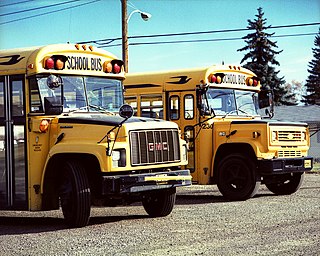
The Chevrolet and GMC B series was a series of cowled chassis that were produced by General Motors. Produced across three generations from 1966 to 2003, the model line was a variant of medium-duty trucks marketed under the Chevrolet and GMC nameplates. Initially derived from the medium-duty C/K series, later examples were derived from the GMT530 architecture.

The Chevrolet Kodiak and GMC TopKick are a range of medium-duty trucks that were produced by the Chevrolet and GMC divisions of General Motors from 1980 to 2009. Introduced as a variant of the medium-duty C/K truck line, three generations were produced. Slotted between the C/K trucks and the GMC Brigadier Class 8 conventional, the Kodiak/TopKick were developed as a basis for vocationally oriented trucks, including cargo haulers, dump trucks, and similar vehicles; on later generations, both cutaway and cowled-chassis variants were produced for bus use.

The medium-duty version of the Ford F-Series is a range of commercial trucks manufactured by Ford Motor Company since 1948. Derived from the smaller F-Series pickup trucks, the medium-duty range is currently in its eighth generation. Initially slotted between the F-Series pickup trucks and the "Big Job" conventionals, later generations were slotted below the L-Series "Louisville" trucks; the last two generations are the largest vehicles produced by Ford since its exit from the heavy-truck segment.
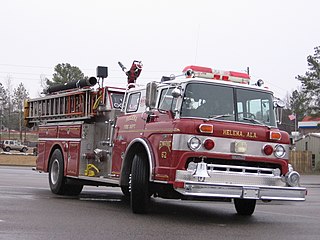
The Ford C series is a range of trucks that was produced by Ford between 1957 and 1990. The first cab over engine (COE) truck produced with a tilting cab by Ford, the C series replaced the C-series COE variant of the F-Series, produced since 1948. Produced as both a straight/rigid truck and a tractor, many versions of the C series were produced, ranging from Class 5 to Class 8 GVWRs. The C-series was also used as a basis for fire apparatus production.

The Mack B series is a model line of trucks produced by Mack Trucks between 1953 and 1966. The successor to the 1940-1956 Mack L series, the B-series was a line of heavy conventional-cab trucks. Adopting a more streamlined appearance over its predecessor, the B-series was designed with a sloped windshield and larger, rounded fenders The model line was sold in multiple configurations, including tractors and straight/rigid trucks, cowled chassis, or fire trucks.

The GMC Brigadier is a series of heavy-duty trucks that were assembled by the GMC Truck and Coach Division of General Motors. The second generation of the H/J-series heavy-duty conventionals, the Brigadier was produced from 1978 to late 1989, as a WhiteGMC for the last year and a half. Slotted between the largest medium-duty C/K trucks and the GMC General, the Brigadier was a Class 7-8 short-hood conventional similar to the Ford L-Series and Mack Model R. Configured in both straight truck and semi-tractor layouts, the Brigadier saw use in short-haul, vocational, and severe-service applications.

The International MV, known as the 4000 series prior to 2008 and the DuraStar from 2008 to 2018, is a line of medium-duty trucks produced by Navistar International since 2001. Introduced as the successor to the International 4000 series of 1989–2001, the 4000 series was renamed the DuraStar in 2008. Sharing its chassis with the medium-duty Ford F-Series, the International DuraStar competed against chassis cab vehicles derived from pickup trucks, such as the Freightliner M2 and the Hino 600, Developed as a Class 6-7 product range, the 4000/DuraStar was slotted below the 8000/TranStar regional-haul semitractor, with the Class 5 International TerraStar (2010–2015) serving as the smallest International conventional-cab product range.

The Blue Bird Vision is a school bus that is manufactured and marketed by Blue Bird Corporation in North America and exported worldwide. In production since 2003, the Vision became the first cowled-chassis bus built on a proprietary chassis designed and manufactured by the same company. While it is sold primarily in a school bus configuration, the Blue Bird Vision is also offered with various commercial and specialty seating and design configurations.

The Ford L-series is a range of commercial trucks that were assembled and marketed by Ford between 1970 and 1998. They are also known as Ford Louisville or, for the 1990s aerodynamic models, Ford Aeromax. The first dedicated Class 8 truck produced by the company, although Ford had been producing "Heavy Duty" trucks since 1948 and their "Super Duty" lineup since 1958. The L-Series was the successor of the F-900/F-1000 Super Duty and the Ford N-Series. The line encompassed a wide range of models in GVWR Classes 6 through 8, as either straight trucks or as semi-tractors, with vehicles developed for medium-duty, on-highway, severe-service, and vocational applications.

The International S series is a range of trucks that was manufactured by International Harvester from 1977 to 2001. Introduced to consolidate the medium-duty IHC Loadstar and heavy-duty IHC Fleetstar into a single product range, the S series was slotted below the Transtar and Paystar Class 8 conventionals.
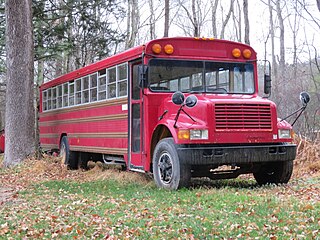
The bus chassis variant of the International S series is a cowled bus chassis that was produced by International Harvester from 1979 to 2004. Produced primarily for school bus applications, the chassis was also produced for other applications, including commercial-use buses and cutaway-cab buses. In addition, the cowled chassis formed the basis for front-engine and rear-engine stripped chassis produced for bus applications.

The International R series is a model range of trucks that was manufactured by International Harvester. Introduced in 1953 as the replacement for the International L series, the model line marked the introduction of the IH "tractor" grille emblem on International road vehicles. Sharing a cab with its predecessor, the R-series marked the introduction of four-wheel drive vehicles and the wider use of diesel engines.

The fifth generationof the Ford F-Series is a line of pickup trucks and commercial trucks that were produced by Ford from the 1967 to 1972 model years. Built on the same platform as the fourth generation F-Series, the fifth generation had sharper styling lines, a larger cab, and expanded engine options.

The sixth generation of the Ford F-Series, also known as the "dentside Ford" to enthusiasts, is a line of pickup trucks and medium-duty commercial trucks that were produced by Ford Motor Company from the 1973 to 1979 model years. Produced by Ford in North America, Argentina, and Australia, this is the third and final generation of trucks derived from the 1965 Ford F-Series.
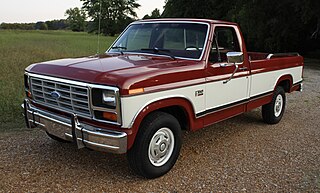
The seventh generation of the Ford F-Series is a range of trucks that was produced by Ford from the 1980 to 1986 model years. The first complete redesign of the F-Series since the 1965 model year, the seventh generation received a completely new chassis and body, distinguished by flatter body panels and a squarer grille, earning the nickname "bullnose" from enthusiasts. This generation marked several firsts for the model line, including the introduction of the Ford Blue Oval grille emblem, the introduction of a diesel engine to the model line, and a dashboard with a full set of instruments (optional). Conversely, this generation marked the end of the long-running F-100, the Ranger trim, and sealed-beam headlamps.

The ninth generation of the Ford F-Series is a lineup of trucks that were produced by Ford from the 1992 to 1998 model years. The final generation of the F-Series to include a complete range of trucks from a half-ton F-150 pickup truck to a medium-duty F-800 commercial truck, this is the third generation of the F-Series body and chassis introduced for 1980.

The Freightliner Business Class M2 is a model range of medium-duty trucks produced by Freightliner since the 2003 model year. The first generation of the Business Class developed entirely by Freightliner, the M2 replaced the FL-Series introduced in 1991. Serving as a Class 5-Class 8 product range, the M2 competes primarily against the International MV and the Ford F-650/F-750 Super Duty.
